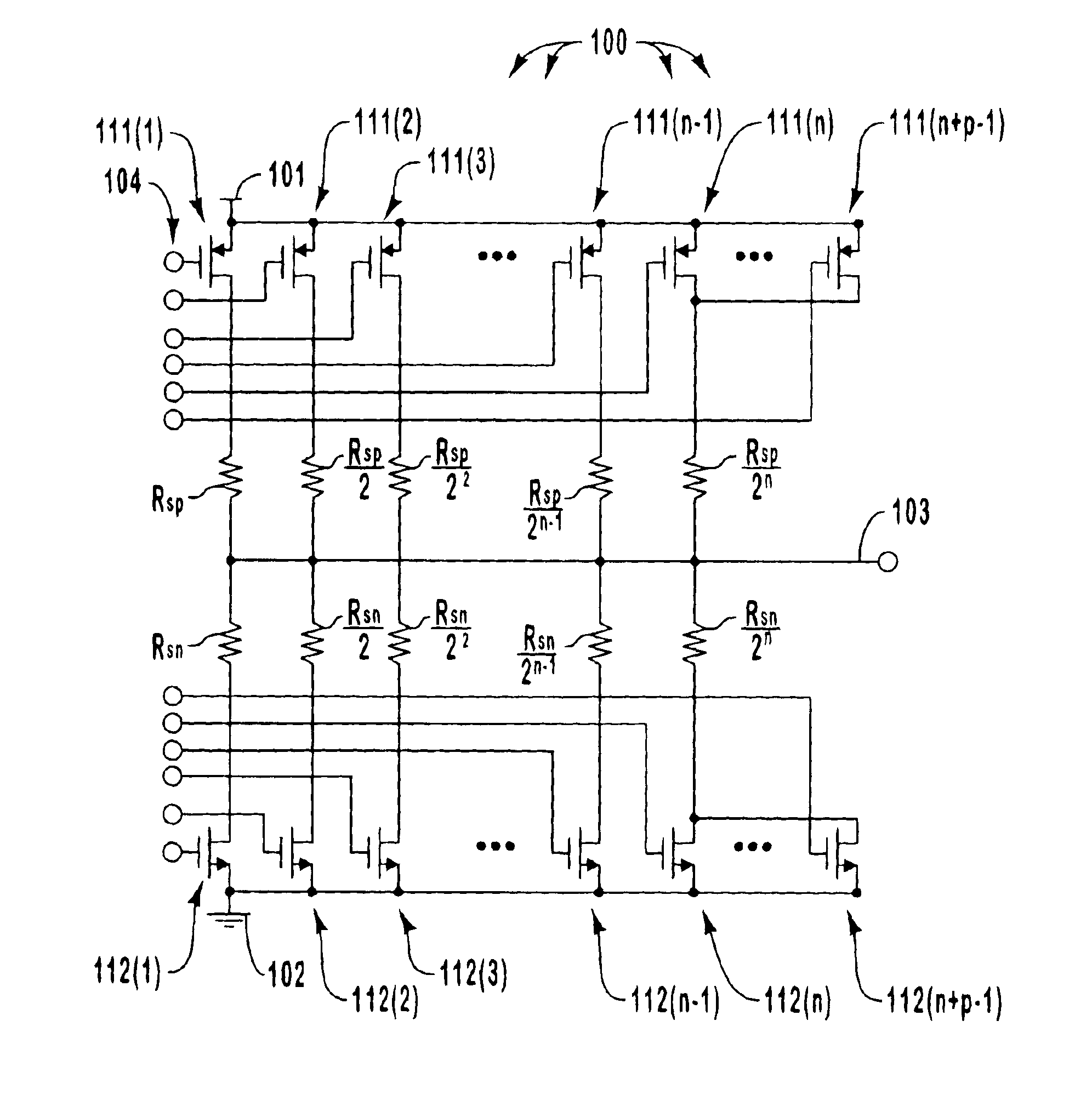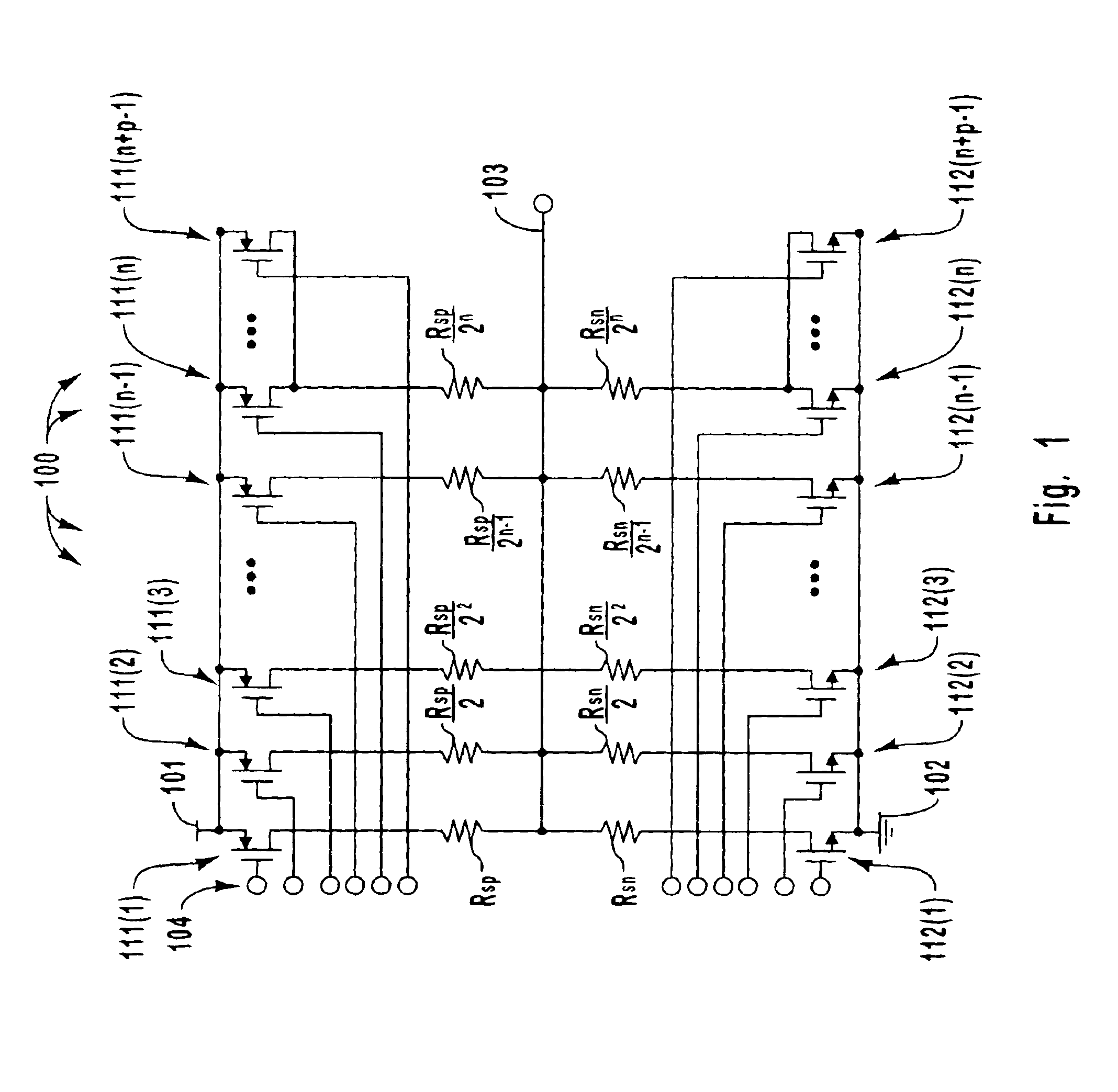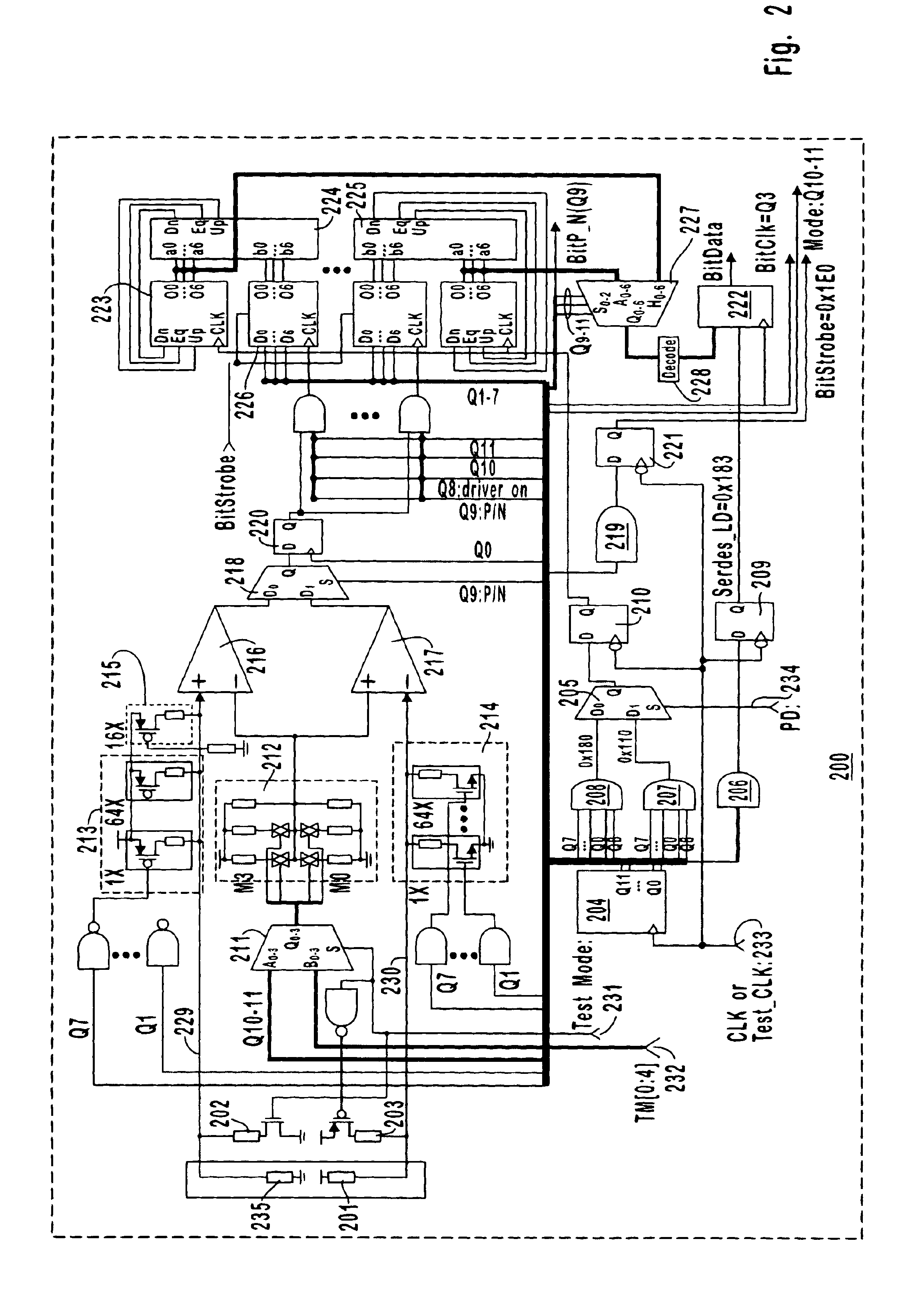Digitally controlled impedance driver matching for wide voltage swings at input/output node and having programmable step size
a technology of wide voltage swing and driver, applied in the direction of pulse technique, oscillation generator, reliability increasing modifications, etc., can solve the problems of increasing layout area and routing traffic, reducing the impedance of each fine finger, and inaccurate output impedance of dci driver
- Summary
- Abstract
- Description
- Claims
- Application Information
AI Technical Summary
Benefits of technology
Problems solved by technology
Method used
Image
Examples
Embodiment Construction
[0029]The principles of the present invention are directed towards a Digitally Controlled Impedance (DCI) driver that is configured to drive a signal on its input / output node while at the same time controlling its own output impedance looking into the input / output node to closely match the input impedance of the load coupled to the input / output node. Such impedance matching greatly improves the quality of the signal that the DCI driver asserts on the input / output node.
[0030]FIG. 1 illustrates a DCI driver 100 in accordance with one embodiment of the present invention. The DCI driver 100 includes multiple fingers 111(1) through 111(n+p−1) and 112(1) through 112(n+p−1), where “n” and “p” are positive integers. The output impedance of the DCI driver 100 is controlled by configuring the multiple fingers so that the appropriate fingers are on and off to obtain the desired output impedance.
[0031]Each finger 111(1) through 111(n+p−1) includes a p-type Field Effect Transistor (pFET) unit as...
PUM
 Login to View More
Login to View More Abstract
Description
Claims
Application Information
 Login to View More
Login to View More - R&D
- Intellectual Property
- Life Sciences
- Materials
- Tech Scout
- Unparalleled Data Quality
- Higher Quality Content
- 60% Fewer Hallucinations
Browse by: Latest US Patents, China's latest patents, Technical Efficacy Thesaurus, Application Domain, Technology Topic, Popular Technical Reports.
© 2025 PatSnap. All rights reserved.Legal|Privacy policy|Modern Slavery Act Transparency Statement|Sitemap|About US| Contact US: help@patsnap.com



